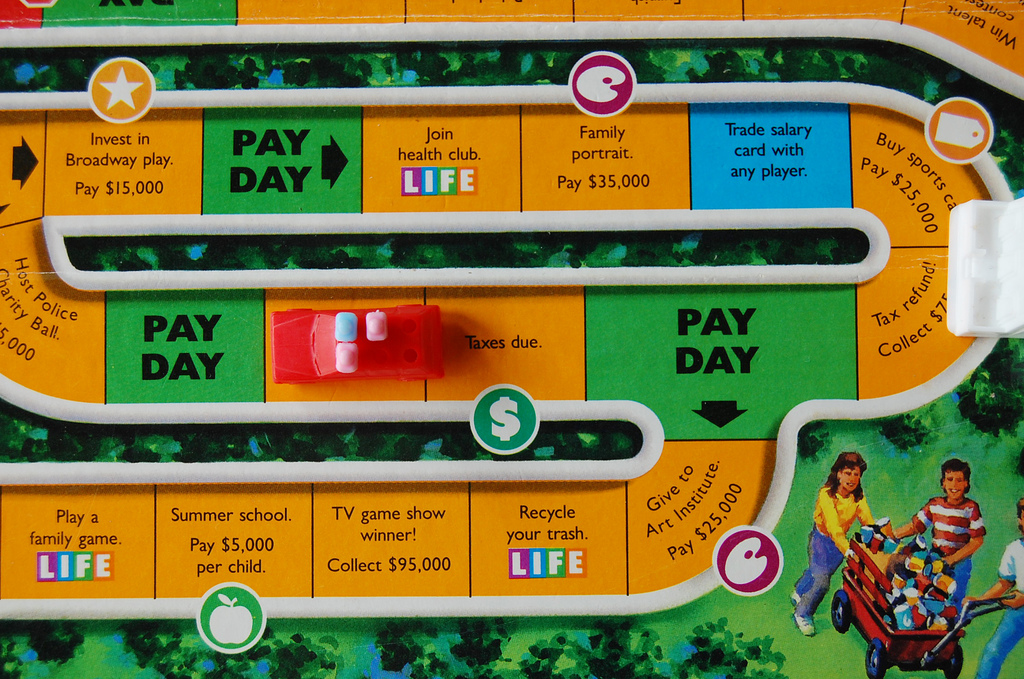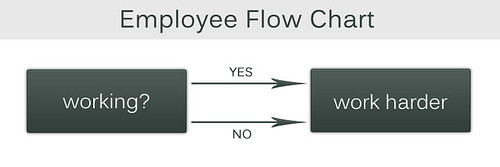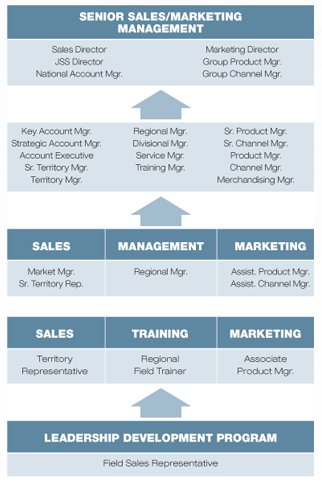We’ve all heard this tired, old Generation Y stereotype:
“They expect to start as an intern on Monday and be the CEO by Friday.”
While it’s not necessarily true, it does tap into students and recent graduates’ strong desire to know where their careers will take them – not just at the entry level, but also in the stages to follow.
As it turns out, this is all very important to employers too. You pour thousands of dollars and hundreds of hours into recruiting, hiring, training, mentoring, rotating and managing each of your youngest employees, so it only makes sense that you would want to retain them and keep all of that capital within your organization for as long as possible.
Plus, many employers are concerned about hiring and training their future leaders as a large segment of their workforce – the Baby Boomers – retires.
Yet any mention of the long-term careers of recent graduates is decidedly absent from most campus recruitment messaging. What’s up with that?
What students and recent grads are thinking
Sure, many students and grads are just desperate to get jobs. They’ll take anything and they’re probably not thinking long-term. But you and I both know those aren’t the candidates you want.
As top students and grads consider your career opportunities, they’re asking themselves:
- Where will I go from here?
- How long will it take to get there?
- What do I need to do to be successful?
- Will I stay with one company or move around?
- How will this company support my long-term career goals?
At the same time, they’re comparing the answers to these questions that they’ve gathered about your organization against the answers provided by other companies.
Put this on your to-do list:
- Do an audit of your competitors. How do they answer the above questions and how do their answers compare with the initiatives in place at your organization? Once you understand this, you can better position your messaging to appeal to students and grads.
Why retention needs to starts with recruitment
Retention strategies have to start early on. Much earlier than you might think. If you start thinking about retention once someone is hired, it’s already too late because you may have hired the wrong candidate.
As you craft your campus recruitment messages, it’s important to keep in mind that like attracts like. It’s kind of like positive thinking or looking where you want to go when you’re driving: If you put the message out there that you’re willing to develop, and want to retain and promote your employees from within, you’re guaranteed to attract candidates who are looking for that as well.
The best retention strategies don’t throw carrots at employees when they’re thinking of leaving; they start with a promise during the recruitment process and pay off as you fulfill that promise to the employee throughout his or her career.
Put this on your to-do list:
- Chart a “success path” for some of the key roles that you hire for. Outline some of the most successful behaviors and important milestones for each path. The paths will probably look more like tree branches than straight lines, but you need to be able to visualize the information before you can communicate it effectively to potential candidates.
How to integrate retention messages into campus recruitment
Feature employees who have advanced beyond the entry level
Your organization’s campus recruitment success stories don’t have to stop at the entry level. Once a recent grad has been promoted (or has made a lateral move), you can still feature them in your campus recruitment messaging. In fact, their stories may be even more valuable to potential recruits because they outline one potential “success path” within your organization.
For example, face-to-face fundraising agency Public Outreach featured their Manager of National Recruitment in this editorial because she moved from an entry level to a senior role within a matter of a few years – a common theme in the company’s other editorial pieces featured on TalentEgg as well.
What to include:
- Graduation year, program and school
- Start date with your organization, plus their starting, current and intermediary roles
- Why they’ve stayed with the same employer
- Why they think they’ve been so successful
- Where they see their career going from here
Use illustrations and flow charts
You know what they say: a picture is worth a thousand words.
Basic illustrations and flow charts can be an effective way to communicate an employees’ progression through your company – and indicate to students and grads that, yes, it’s possible to move up within the company.
For example, TTi uses this simple but crystal clear flow chart (right) to illustrate potential career paths within the company when new grads start in their entry level Field Sales Representative role.
If marketing only one possible path makes you uncomfortable, include a disclaimer or feature the career path of a real person.
Alberta Health Services covers multiple campus recruitment messaging bases by featuring videos, testimonials and flow charts about the careers of three recent grads who have progressed within the organization.









0 Comments
1 Pingback